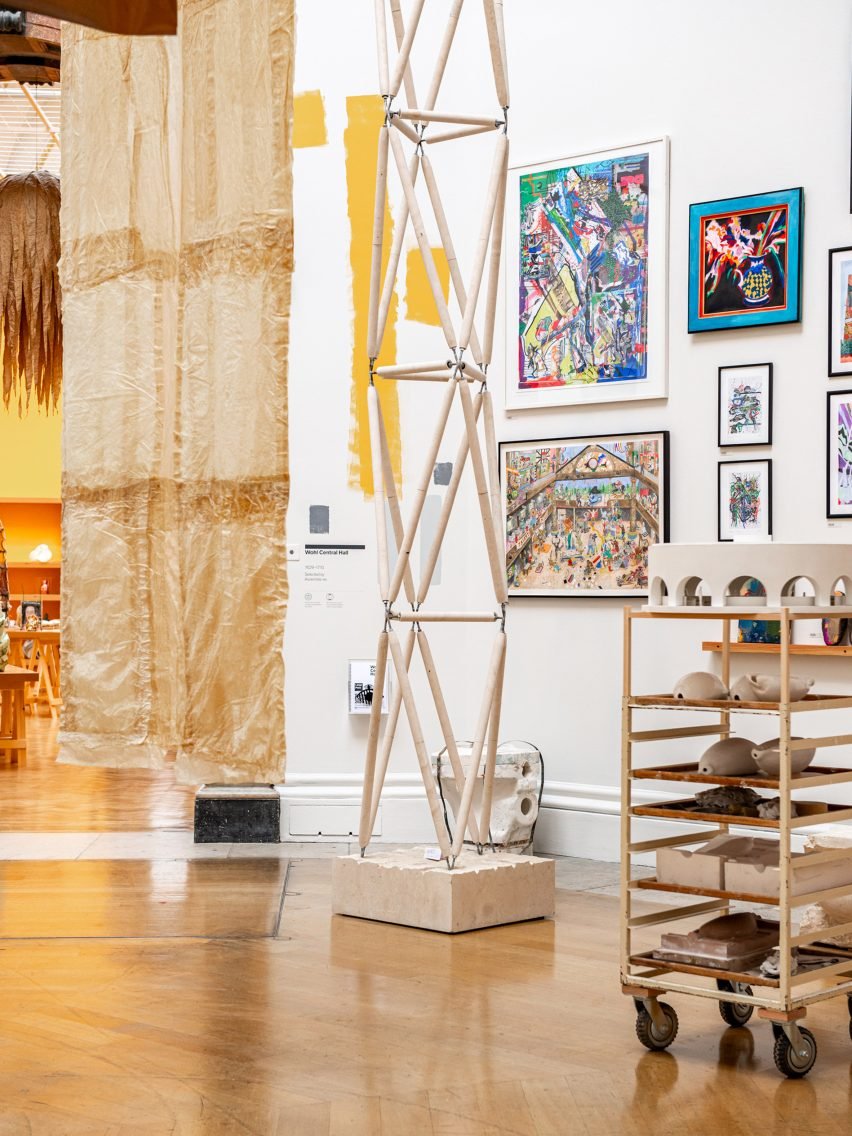The Royal Academy of Arts’ Summer Exhibition 2024 is all about pushing boundaries—showcasing innovative architectural designs that put a spotlight on low-carbon materials and contemporary uses of stone. Curated by Assemble, this exhibition taps into the beautiful blend of art and architecture, making it a must-see for anyone interested in sustainable design.

Key Takeaways:

- Innovative Use of Stone: The exhibition redefines stone architecture with modern techniques and thoughtful design.
- Sustainable Practices: Webb Yates shines with their post-tensioned stone frame, emphasizing low-carbon and eco-friendly materials.
- Collaboration and Curatorship: The collaboration with Assemble presents a novel approach to the exhibition, marrying art with architectural wonders.
Introduction to the Royal Academy of Arts Summer Exhibition
Stepping into the Royal Academy of Arts feels like diving into an exhilarating blend of creativity and innovation. This year’s Summer Exhibition, oh boy, really knocked my socks off. It’s got everything! We’re talking about architecture that doesn’t just stand firm but resonates with the purpose of sustainability. As an architect, I couldn’t help but admire how stone, often considered a traditional material, takes on a fresh personality in this exhibit. Honestly, it’s like watching an old friend reinvent themselves!

Innovative Use of Stone in Modern Architecture
In today’s architectural playground, stone isn’t just a hard surface to stand on. Nope, it’s being reimagined, reshaped, and used in innovative ways that would make any architect proud. The innovative use of stone can make a structure feel bustling with life, almost as if it were telling a story through its very form. It’s playful, it’s serious, and it’s definitely contemporary. Just when you think you’ve seen it all, someone manages to spin the wheel another notch! Take a look around, folks—this isn’t just about building; it’s about connecting to our culture and history while steering into the future.
Webb Yates’ Post-Tensioned Stone Frame
Now, let me dive into one of the show-stoppers: Webb Yates’ post-tensioned stone frame. This piece was the cherry on top of an already sumptuous architectural cake! Imagine the strength of stone, getting a bit of a twist with modern engineering know-how. It’s like giving a solid, old-school rock concert a funky remix. The post-tensioning allows for the material to be used in new ways, offering possibilities that are as light as a feather while still being as tough as nails. Trust me, it set the stage for a whole display of architectural finesse you’d want to clap for!

Collaboration with The Stonemasonry Company
And let’s not forget about the fantastic synergy that came through collaboration, particularly with The Stonemasonry Company. Who knew stonemasons could turn traditional craft into such high art? Their partnership with Webb Yates added depth and character to the exhibition, demonstrating that the hands shaping stone can tell a story. It’s such a brilliant match! Just like peanut butter and jelly or Batman and Robin, they proved that when creative minds come together, the end result can be greater than the sum of its parts!

Exhibition Design by Assemble: A New Approach
Assemble’s exhibition design has made waves this year! Talk about fresh ideas! Their thoughtful layout encourages continuous flow; it’s practically inviting you to stroll around and soak up every bit of inspiration like a sponge. The design turns an ordinary gallery into a lively space, making you feel like you’re walking through an artful dialogue between stone and form. Honestly, if that doesn’t get your creative juices flowing, I don’t know what will. It’s like a painter letting their brush dance freely across a canvas.
Other Notable Stone Installations
Of course, Webb Yates isn’t the only game in town. Other notable stone installations caught my eye, each adding its own unique flair to the exhibition. Each piece has its own personality—like that quirky friend who shows up at every get-together, always ready to jump in with some lively tales. From sculptural forms that evoke emotions to functional designs that make you reconsider how you see stone, each work is a lesson in what’s possible when we push the limits of creativity.
The Intersection of Art and Architecture
Have you ever noticed that art and architecture have this beautiful dance between them? The Royal Academy’s Summer Exhibition illuminates this relationship. The way art enhances architecture, and architecture gives life to art, well, it’s like a symphony of structure and spirit. You can feel the energy vibrating off the walls, a reminder that the two aren’t separate—they’re intricately woven together like a fine tapestry. The exhibition provokes thought about how our surroundings shape our experiences. It’s profound yet palpably simple.
Participating Artists and Designers
This year’s exhibition features some serious talent, highlighting numerous participating artists and designers. It’s like the A-team of the design world gathered for an epic showdown, all sharing their visions while lit up by the glow of collective inspiration. I assure you, seeing the variety of styles is enough to put a grin on anyone’s face. Each contribution adds another layer of texture to the overall experience, proving that the future of architecture and art isn’t just promising—it’s bursting at the seams with potential!
Conclusion: The Future of Stone in Architecture
As I wrapped my head around the impressive innovations displayed in the Royal Academy of Arts’ Summer Exhibition, I couldn’t help but feel a sense of optimism creeping in. The future of stone in architecture seems shiny and bright. With sustainability becoming more than just a buzzword, it’s refreshing to see how we can honor history while making way for thoughtful design. Truly, I’m convinced that stone will continue to play a prominent role in shaping our built environment. So, here’s to the next wave of architects and artists! Go ahead and turn the world on its head—just remember, it’s all about thinking outside the box (or should I say stone?).







